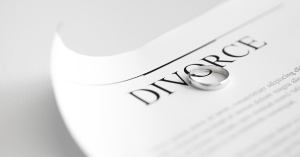The world is still looking for answers following a devastating explosion in Lebanon‘s capital city of Beirut. The blast, occurring at approximately 6 p.m. local time, has left at least 100 dead and thousands more injured, with reports claiming over half of the city has been damaged. As the search continues for survivors, many are left wondering what caused the Beirut explosion?
Although there have been conflicting reports regarding what caused the massive explosion, with President Donald Trump even suggesting that it could have been an “attack,” initial reports point to a fire that broke out at a warehouse, which stored “highly explosive material.” Prime Minister Hassan Diab said Wednesday morning that approximately 2,750 metric tons of ammonium nitrate, which is typically used as an agricultural fertilizer, had been stored at a port warehouse for the past six years “without preventive measures,” CNN reports. Lebanon’s General Security chief Abbas Ibrahim said a “highly explosive material” had been confiscated years earlier and stored in the warehouse.
Videos by PopCulture.com
The explosion took place near Beirut’s port and central district, which is located near a number of notable landmarks, including the historic Martyrs’ Square; the Gemmayzeh and Mar Mikhael neighborhoods, fixtures of the Beirut bar scene; the landmark Mohammad Al-Amin Mosque; Grand Serail, the government palace; and Baabda Palace, the official residence of the Lebanese President. Residents reported that the blast could be felt from as far away as Cyprus, which is located some 150 miles away, with homes located as far away as six miles from the port suffering damage. The explosion registered as a 3.3 magnitude earthquake.
According to the state-run National News Agency, at least 100 people have been killed and at least 4,000 others have been injured, overwhelming hospitals that were already struggling amid the coronavirus pandemic. Health Minister Hamad Hassan said the death toll is expected to rise as recovery efforts continue, as “there are many people missing.” Among those confirmed dead are Nazar Najarian, the secretary-general of the Kataeb political party, an Australian citizen, a Japanese citizen, two Filipino citizens, and six Turkish citizens. At least 10 firefighters who had responded to the warehouse fire are currently missing.
In the wake of the blast, Lebanese President Michel Aoun has promised an investigation into the incident, stating that those responsible would be held accountable and face “severe punishment.” Diab has also announced an investigation, explaining that the probe would include “revelations that will be announced about this dangerous warehouse which has been present since 2014.” He said that he “will not rest until we find those responsible for what happened, hold them accountable, and impose maximum punishment.”









